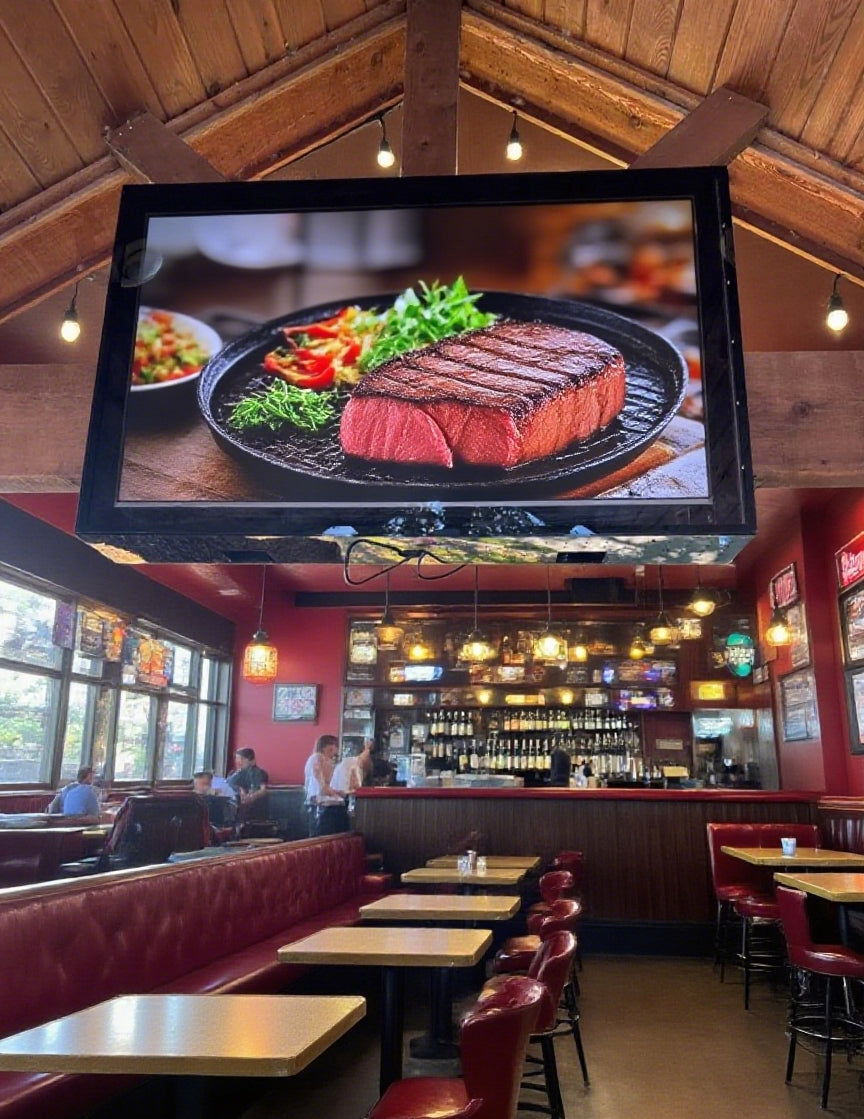
Commercial vs. Residential TV Enclosures: Detailed Comparison and Buying Guide
Selecting the right TV enclosure is essential to protect your investment, whether for public commercial use or private residential settings. Understanding the differences helps you choose a product that fits your environment, security needs, and operational demands.
1. Durability and Operating Hours
Commercial Enclosures
Commercial TV enclosures are engineered to withstand the rigors of public and industrial environments. These units typically feature heavy-gauge materials such as powder-coated steel or marine-grade aluminum. Their rugged construction protects against impacts, vandalism, and weather exposure. Moreover, commercial enclosures are rated for continuous operation—running TVs 24/7 without overheating or damage, which is common in retail stores, airports, sports bars, and outdoor digital signage.
Residential Enclosures
Residential enclosures emphasize design aesthetics and indoor/outdoor casual use. They are usually made from lighter, corrosion-resistant plastics or aluminum but are not built for continuous use. These are ideal for patios, backyards, or family rooms where TVs operate a few hours daily. They provide basic protection from dust, moisture, and accidental bumps but are less suited to harsh or round-the-clock environments.
2. Environmental Protection & Climate Control
Commercial Enclosures
These enclosures feature advanced weatherproofing elements including sealed gaskets, waterproof locks, and tempered glass to ensure full protection from rain, snow, dust, and insects. Often, they include climate management systems such as:
-
Thermostatically Controlled Fans: Automatically maintain optimal operating temperature by cooling the display as needed.
-
Internal Heating Elements: Prevent electronics failure in freezing or extremely cold environments.
-
UV Protection: Glass or panel coatings reduce sun damage and glare, preserving screen visibility and longevity.
Such features make commercial enclosures suitable for outdoor stadiums, industrial sites, or any location with extreme temperature fluctuations.
Residential Enclosures
Residential enclosures offer moderate weather protection. They can handle rain splashes and outdoor humidity but generally lack internal climate control. Ventilation is usually passive, relying on small vents or mesh panels to prevent heat buildup. These are perfect for covered patios or mildly exposed spaces but not recommended for harsh or extreme climates.
3. Security and Tamper-Proof Features
Commercial Enclosures
Security is paramount in public venues. Commercial enclosures incorporate robust locking systems, tamper-resistant screws, and reinforced hinges to deter theft, vandalism, and tampering. Their design often includes:
-
Lockable access doors with key or combination locks.
-
Hidden hardware to prevent removal of covers or displays.
-
Reinforced frames constructed to resist forced entry and impact.
These features are essential for environments such as malls, transit hubs, schools, and government buildings where TVs are easily accessible to the public.
Residential Enclosures
Home enclosures focus primarily on protecting against accidental damage, such as knocks from children or pets, and minor theft prevention. Locks and latches may be included but are generally simpler. The emphasis is more on preserving the TV’s condition and compatibility with home interior design than on heavy-duty security.
4. Visibility and Display Features
Commercial Enclosures
Given that commercial displays are meant for public viewing, enclosures are designed to maximize screen visibility in challenging lighting conditions. They often support:
-
High-brightness Displays: Over 1,000 nits brightness to overcome sunlight and bright indoor illumination.
-
Anti-glare and Anti-reflective Glass: Improve clarity and readability from multiple viewing angles.
-
Portrait Orientation: Allow vertical mounting for advertisements, menus, or digital signage.
This ensures that messages or visuals remain clear and impactful in diverse environments.
Residential Enclosures
Designed to house consumer-grade TVs, residential enclosures accommodate lower-brightness displays geared for indoor lighting. They rarely include specialized coatings or orientation flexibility; landscape (horizontal) mounting remains standard. The focus is on complementing home décor while providing basic protection without sacrificing image quality.
5. Mounting and Integration
Commercial Enclosures
Commercial-grade enclosures are engineered for heavy-duty, flexible mounting solutions. They align with industry-standard VESA mounting specifications that support larger, heavier displays. Features often include:
-
Cable management systems that hide power cords, HDMI cables, and other wiring.
-
Accessibility for remote controls and service panels.
-
Compatibility with wall mounts, poles, ceilings, or custom fixtures.
This versatility suits retail locations, arenas, or industrial facilities requiring robust, professional installations.
Residential Enclosures
Residential units utilize standard VESA mounts compatible with common consumer TVs, weighted for lighter setups. Installation generally involves straightforward wall mounting or placing on stands. Cable management is simpler, focusing on reducing clutter rather than protecting against tampering.
Additional Considerations for Buyers
-
Size and Compatibility: Always verify enclosure dimensions fit your TV model, especially depth and ventilation space.
-
Warranty and Support: Commercial enclosures often come with extended warranties and manufacturer support for heavy use.
-
Installation Environment: Indoor vs. outdoor positioning should guide your choice on weatherproofing and ventilation.
-
Budget: Commercial enclosures cost more due to materials, climate controls, and security features. Residential units are more budget-friendly but offer less protection.
Maintenance Tips
-
Cleaning: Use non-abrasive cleaners for glass and plastic panels. For outdoor enclosures, clear debris regularly to avoid vent blockage.
-
Inspect Seals: Check gaskets and locks periodically to maintain weather and insect protection.
-
Check Climate Controls: For commercial units, test fans and heaters seasonally to ensure proper function.
-
Tighten Hardware: Prevent loosening due to vibrations or tampering by inspecting mounting screws and locks regularly.
Conclusion
Choosing between commercial and residential TV enclosures depends on your environment, security needs, and how often the display will operate. Commercial enclosures offer rugged construction, advanced climate control, and security for demanding, round-the-clock public use. Residential enclosures prioritize aesthetics and basic protection, suited for casual home use.
